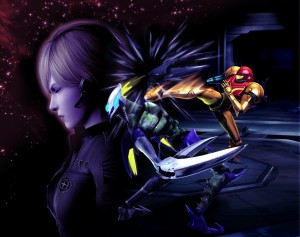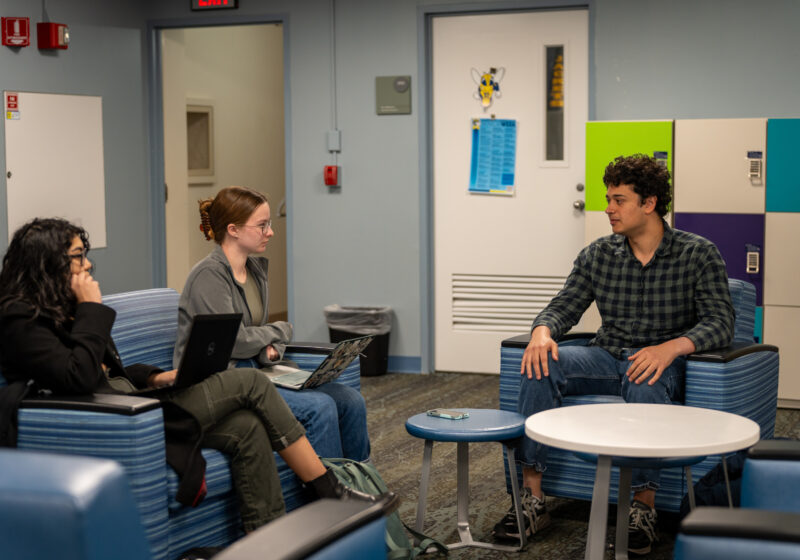 “Metroid: Other M” is a video game lesson in dichotomy; Samus Aran has never kicked so much ass, yet at the same time she has never revealed so much personal inner turmoil.
“Metroid: Other M” is a video game lesson in dichotomy; Samus Aran has never kicked so much ass, yet at the same time she has never revealed so much personal inner turmoil.
For years she has simply been an arm cannon wielding bounty hunter, a beacon of female light in a male-dominated video game world. But with the suit stripped away, this unique and rare glimpse into Samus’s psyche is just one of many new design choices made in MOM.
A little back story is needed to set up the game properly. A joint venture, MOM was co-developed by Nintendo and Team Ninja, and to many fans this might have originally seemed as an odd pairing.
However, both teams seem to create a product that was derived from the combinations of each of their strengths, with Ninja bringing their storytelling, cinematic crafting and intense action segments, which all complement the already well established Metroid core that Nintendo has long worked on.
There are many, many things that MOM does right, and many that take some getting used to. Enemies no longer drop health and ammo. Power-ups are no longer gotten from defeating bosses.
And if you drop below a certain health benchmark, you can “concentrate” to regain small amounts of health.
Most of the game is a trek from save point to save point, like in “Metroid Fusion,” and while this breaks down some of the exploration, the game is still able to throw surprises at you while still keeping that important sense of exploring new areas intact.
Graphically the game looks good, but it absolutely shines in the cut scenes, which are some of the most beautiful graphical work I’ve ever seen on the Wii. Sure, the cut scenes can be long and are bookended at the start and end of the game, but I found the story engaging and interesting. While we aren’t talking Hollywood story structure, it did give us some meat compared to what normally passes for a Nintendo story.
No simple “save the princess” theme here, and I was very glad to see one of Nintendo’s more complex characters actually show off that complexity. Sure, many fans aren’t going to be happy that their bounty hunter has feelings and emotions, and some of the dialogue borders on campy, but the end result reveals that Samus is more than a trigger-happy hunter.
This is again when the binary structure of the game comes into play. As the story reveals the human side of Samus, the Team Ninja inspired finishing moves shows her at her most ferocious. Jumping under, flying above or choke-holding and then tossing the enemies into the air, Samus kicks ass up and down the game.
From the over the top kill animations that you are able to unleash, to the intensely damaging claws of defeat in which you can find yourself, Samus has never shone so brightly.
Fitting to the mood, the game holds nothing back from the player. MOM is hard, and I found myself dying more than most games that I have played in recent memory.
This game brings an old school level of difficulty even on the first play through, so all those save points and check points work more in the player’s favor than the other way around.
The atmosphere in the game is something that I also felt the Nintendo/Team Ninja collaboration hit perfectly. Helped by the eerie soundtrack (and a few remixed tunes sure to please old fans), the feeling of mystery, intrigue, and that hardheart racing, all senses on edge Metroid atmosphere is very present and works incredibly well.
But even among all the great things in the game, a few still have me scratching my head. Limiting controls only to the Wiimote sideways does away with what most gamers are using in a 3-D world: a little invention called the analog stick.
Limiting players to the D-Pad seemed to make even simple tasks in this game harder than they needed to be: By the end of the game I was still struggling to line Samus up exactly on the save station spots.
The camera makes what would have possibly been game breaking problems work. Shifting angles help to orient yourself, but it still seems like the game continually tries to work around this problem instead of implementing the simple solution: using the analog stick.
The limit on the number of buttons also makes it feel like many of the game’s intense actions are happening as if by themselves. Many times I found myself dodging or using a finishing move just because I was running toward an enemy; with both options mapped to the same button, the action at times felt a little separated from what I was actually pushing.
All aiming is also done automatically, which further removes players from the action on screen.
The idea of switching between third and first person view at a whim is one of those ideas that I felt was very good on paper, but I can’t say I was sold on it. The forced detective portions of the game are very breaking to the overall experience.
Also, many of the game’s upgrades are limited to first person view, and switching between both modes in the midst of a boss battle is about as clunky as it would seem.
Sure, the game slows down time for a second to let you orient yourself, but I just didn’t find myself connecting with this feature as I had hoped to. It was a good throwback to the Prime series, but I think keeping Metroid either in first person or third person for future games probably wouldn’t be a bad decision.
Rest assured that despite the negative elements of MOM, this is still very much a Metroid game. Fans of “Fusion” are sure to find a lot to enjoy, but just as many of the games’ radical changes to the formula seem to happen in pairs of good and bad, so I fear this game will also divide players into those who enjoy it and those who do not.
“Metroid: Other M” proves that different isn’t always a bad thing. It still delivers and manages to be an engrossing and emotionally engaging adventure, while continually challenging and reinventing what it means to be a Metroid game in the first place.
Clark is a member of the class of 2012.
